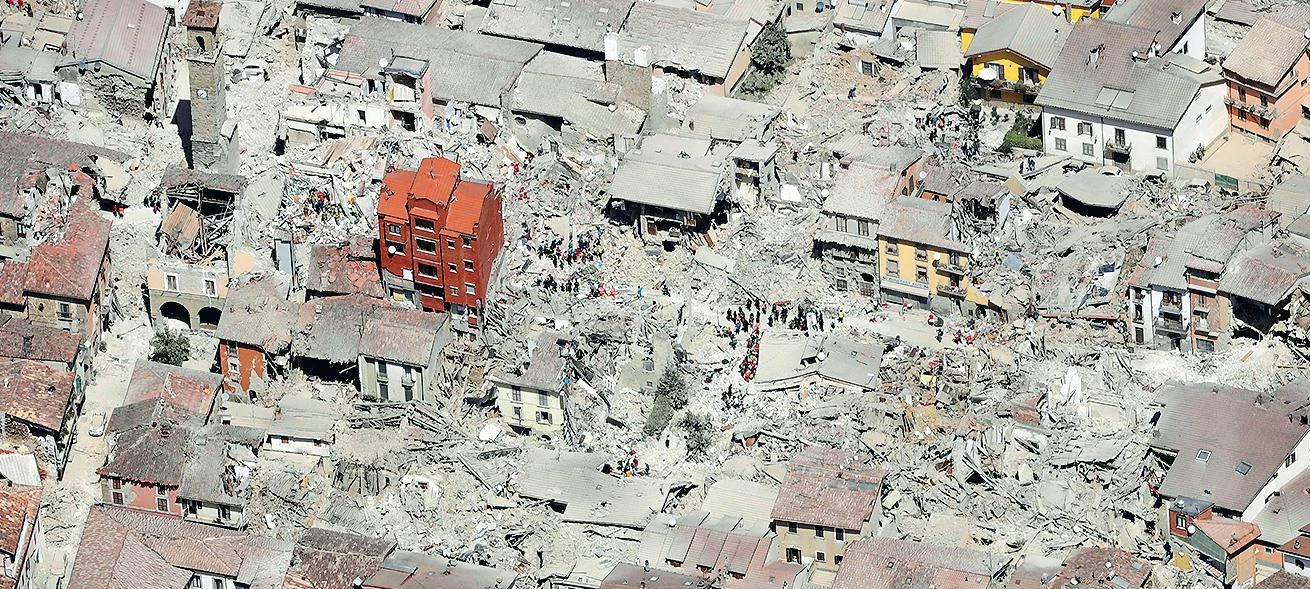
The picture of destruction is terrifying: a jumble of stones and wooden beams burying people who never got to wake up, while a recent building still standing amid rubble suggests that the catastrophe was not inevitable.
We cannot predict the exact time and place of an earthquake (a tornado is just as destructive, but there is forewarning), thus the high cost in human lives. But we are in fact able to assess the seismic risk of places and build in a way that reduces damage. What happened in Italy raises three questions.
First, why do people still live in a zone where earthquakes are frequent?
Even in earthquake-prone places like the Italian regions of Lazio, Le Marche, or Abruzzo, centuries can pass before a town is affected. The existence of centuries-old buildings in Amatrice testifies to this, and its inhabitants up to now believed the risk to be something that could be dealt with.
The second question is: why are buildings not adapted to resist tremors? Here the answer is more complex. Earthquakes manifest themselves through repeated ground movements whose initial acceleration can be a fraction of the acceleration due to gravity, producing a horizontal force exceeding the structure’s capacity to resist it. If the repeated movement coincides with the building’s period of vibration, there is an oscillation of increasing breadth that can cause a loss of equilibrium, the collision of neighboring buildings, or a stretching of the structure’s resistance limit (I remember seeing in Turkey years ago, after a strong earthquake, a mosque and its slender minaret surrounded by the remains of multifloor buildings whose cycles of oscillation had fatally coincided with that of the earthquake).
If the structure is ductile, if even with its limit of resistance stretched it deforms without breaking, it dissipates energy and is more resistant.
Therefore, to resist an earthquake, several factors are in order. In the first place, we want the least possible mass, and structures that are at once highly resistant and highy flexible (two qualities which do not necessarily go hand in hand) and that are as ductile as possible, aside from constructional arrangements that prevent breakage and collapse of non-structural elements from causing damages. Also good are rigid frames of steel, those of reinforced concrete if constructional measures to increase their ductility are taken, and even walls of bricks or blocks if they incorporate a grid of still un-armored concrete bands, which perform well against seismic movements. On the other hand, masonry walls – of the kind seen in most of the traditional houses of Italy’s earthquake-prone regions – are the worst option possible because of their high mass and their poor resistance to horizontal pressures. Finally, the wooden beams and slabs, though high in mass, do not collaborate well with masonry walls, resulting in a construction system that is particularly vulnerable.
This works for new buildings, but how do we make existing buildings safe, especially those raised with traditional methods? Nothing, almost nothing, is impossible, but given the rather unintuitive nature of the dynamic behavior of constructions, and the need for thorough understanding of the reality of buildings being worked on, of the ground they stand on, and of their relation with neighbors, we have the situation where the mere systematic application of recipes is insufficient, and it is unlikely that someone will shoulder the cost of the studies required to design an efficient solution to each case.
These questions address such difficulties that we will probably see more pictures of destruction like those of the aftermath of the Amatrice earthquake.





